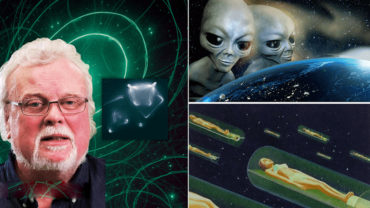“Anunnaki” Metropolis Of More Than 200,000 Years Old Discovered In Africa
They’ve always been there, and people have spotted them in the past, but no one knows who made them or why. No one realized how many there were until lately; now they’re everywhere, thousands aren’t, hundreds of thousands!, and the tale they tell is the most significant story of humanity, but it’s one that many people may be unwilling to hear or embrace (Anunnaki Metropolis)

It appears to have been developed and is part of a much larger community of over 10,000 square kilometers. Are you all set? From 160,000 to 200,000 years before the birth of Christ!!
The image below shows a close-up of a few hundred meters of the countryside, as captured by Google Earth. The region is remote, and local farmers frequently encounter “circles” claimed to have been created by indigenous peoples in the past, but strangely, no one cared to inquire about who might have done it or how ancient it is. (Metropolis of the Anunnaki)
This changed when Michael Tellinger, a researcher and novelist, teamed up with Johan Heine, a local firefighter, and pilot who had been monitoring the remains from the air for years. Heine had the distinct advantage of witnessing the sheer number and extent of these unusual stone foundations, and he was well aware that their significance was undervalued. (Metropolis of the Anunnaki)
“I had no idea. When Johan introduced me to the ancient stone ruins of southern Africa, of the incredible discoveries made in the last year or two, the photographs, artifacts, and evidence that have been accumulating, no doubt, a Lost and never seen before, civilization is before all others, not for a few hundred years, or a few thousand years… But for thousands of years, and these discoveries are so shocking that they are difficult to comprehend by the existing Historical, fraternity, as we have already experienced, will necessitate a total paradigm shift in how we view our humanity’s history – “. Tellinger

The area is significant due to the abundance of gold reserves. “Thousands of ancient gold mines uncovered in this part of the world over the last 500 years testify to a lost civilization that existed and searched for gold for thousands of years,” Tellinger adds. “And if this is truly the cradle of humanity, we could be witnessing the actions of the planet’s oldest civilization.”
Then, within the rectangle’s bounds, conduct a low-level search. Simply outstanding. The site is around 150 kilometers from a good port, where maritime trade could have helped feed such a vast population, but keep in mind that we’re talking about a nearly 200,000-year-old Metropolis.
Individual remains, particularly most stone circles, have been buried in the sand and can only be seen by satellite or plane. Some have been revealed by erosion, which has caused the sand to melt, exposing the walls and foundations.
When Europeans first saw these remains, they thought they were livestock corals created by nomadic tribes such as the Bantu when they went south and occupied the land during the 13th century. There was no evidence in the past of any civilization capable of becoming large enough to support a densely populated population. Because the extent of the ruins was unknown, little effort was put into investigating the site.
People like Cyril Hromnik, Richard Wade, Johan Heine, and others have uncovered in the last 20 years that these stone constructions are not what they appear to be. Indeed, many people now believe that the ruins of ancient temples and astronomical observatories of the ancient civilizations date back thousands of years.
These massive circular ruins can only be appreciated from the air or current satellite images because they cover such a large area. Many of them have been almost totally eroded or covered by agricultural and climate-related earthmoving. Some ancient walls have lasted long enough to demonstrate their massive proportions, with certain towering about 5 feet tall and more than a meter broad in some spots.
As for the whole city, or Metropolis, it is evident that it was a well-planned community developed by a highly evolved civilization. The number of ancient gold mines suggests the community’s reason for this location. We found roads, some stretching hundreds of kilometers that connect the community and terraced agriculture, very similar to those found in the Inca settlements in Peru. But a question asks for an answer – how could humans achieve this 200,000 years ago?



